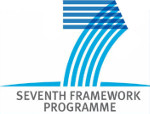Janus II: A new generation application-driven computer for spin-system simulations
Baity Jesi, Marco ; Baños, R.A. ; Cruz Flor, Andrés (Universidad de Zaragoza) ; Fernandez, L.A. ; Gil Narvión, José Miguel ; Gordillo-Guerrero, A. ; Iñiguez Dieste, David ; Maiorano , Andrea ; Mantovani, F. ; Marinari, E. ; Martin Mayor, Victor ; Monforte Garcia, Jorge ; Muñoz Sudupe, A. ; Navarro Tabernero, Denis (Universidad de Zaragoza) ; Parisi, G. ; Pérez Gaviro, Sergio (Universidad de Zaragoza) ; Pivanti, M. ; Ricci-Tersenghi, F. ; Ruiz-Lorenzo, J.J. ; Schifano, S.F. ; Seoane de la Cuesta, Beatriz ; Tarancón Lafita, Alfonso (Universidad de Zaragoza) ; Tripiccione, R. ; Yllanes, D.
Resumen: This paper describes the architecture, the development and the implementation of Janus II, a new generation application-driven number cruncher optimized for Monte Carlo simulations of spin systems (mainly spin glasses). This domain of computational physics is a recognized grand challenge of high-performance computing: the resources necessary to study in detail theoretical models that can make contact with experimental data are by far beyond those available using commodity computer systems. On the other hand, several specific features of the associated algorithms suggest that unconventional computer architectures, which can be implemented with available electronics technologies, may lead to order of magnitude increases in performance, reducing to acceptable values on human scales the time needed to carry out simulation campaigns that would take centuries on commercially available machines. Janus II is one such machine, recently developed and commissioned, that builds upon and improves on the successful JANUS machine, which has been used for physics since 2008 and is still in operation today. This paper describes in detail the motivations behind the project, the computational requirements, the architecture and the implementation of this new machine and compares its expected performances with those of currently available commercial systems.
Idioma: Inglés
Año: 2014
Publicado en: COMPUTER PHYSICS COMMUNICATIONS 185, 2 (2014), 550-559
ISSN: 0010-4655
Factor impacto JCR: 3.112 (2014)
Categ. JCR: COMPUTER SCIENCE, INTERDISCIPLINARY APPLICATIONS rank: 11 / 102 = 0.108 (2014) - Q1 - T1
Categ. JCR: PHYSICS, MATHEMATICAL rank: 1 / 54 = 0.019 (2014) - Q1 - T1
Financiación: info:eu-repo/grantAgreement/EUR/FP7/ERC-2007-2013-247328
Tipo y forma: Artículo (PrePrint)
Área (Departamento): Tecnología Electrónica (Departamento de Ingeniería Electrónica y Comunicaciones)
Área (Departamento): Física Teórica (Departamento de Física Teórica)
 Debe reconocer adecuadamente la autoría, proporcionar un enlace a la licencia e indicar si se han realizado cambios. Puede hacerlo de cualquier manera razonable, pero no de una manera que sugiera que tiene el apoyo del licenciador o lo recibe por el uso que hace.
Debe reconocer adecuadamente la autoría, proporcionar un enlace a la licencia e indicar si se han realizado cambios. Puede hacerlo de cualquier manera razonable, pero no de una manera que sugiera que tiene el apoyo del licenciador o lo recibe por el uso que hace.
0
Exportado de SIDERAL (2016-07-20-10:36:03)
Idioma: Inglés
Año: 2014
Publicado en: COMPUTER PHYSICS COMMUNICATIONS 185, 2 (2014), 550-559
ISSN: 0010-4655
Factor impacto JCR: 3.112 (2014)
Categ. JCR: COMPUTER SCIENCE, INTERDISCIPLINARY APPLICATIONS rank: 11 / 102 = 0.108 (2014) - Q1 - T1
Categ. JCR: PHYSICS, MATHEMATICAL rank: 1 / 54 = 0.019 (2014) - Q1 - T1
Financiación: info:eu-repo/grantAgreement/EUR/FP7/ERC-2007-2013-247328
Tipo y forma: Artículo (PrePrint)
Área (Departamento): Tecnología Electrónica (Departamento de Ingeniería Electrónica y Comunicaciones)
Área (Departamento): Física Teórica (Departamento de Física Teórica)
0
Exportado de SIDERAL (2016-07-20-10:36:03)
Este artículo se encuentra en las siguientes colecciones:
Artículos > Artículos por área > Tecnología Electrónica
Artículos > Artículos por área > Física Teórica
Registro creado el 2016-07-20, última modificación el 2016-10-06